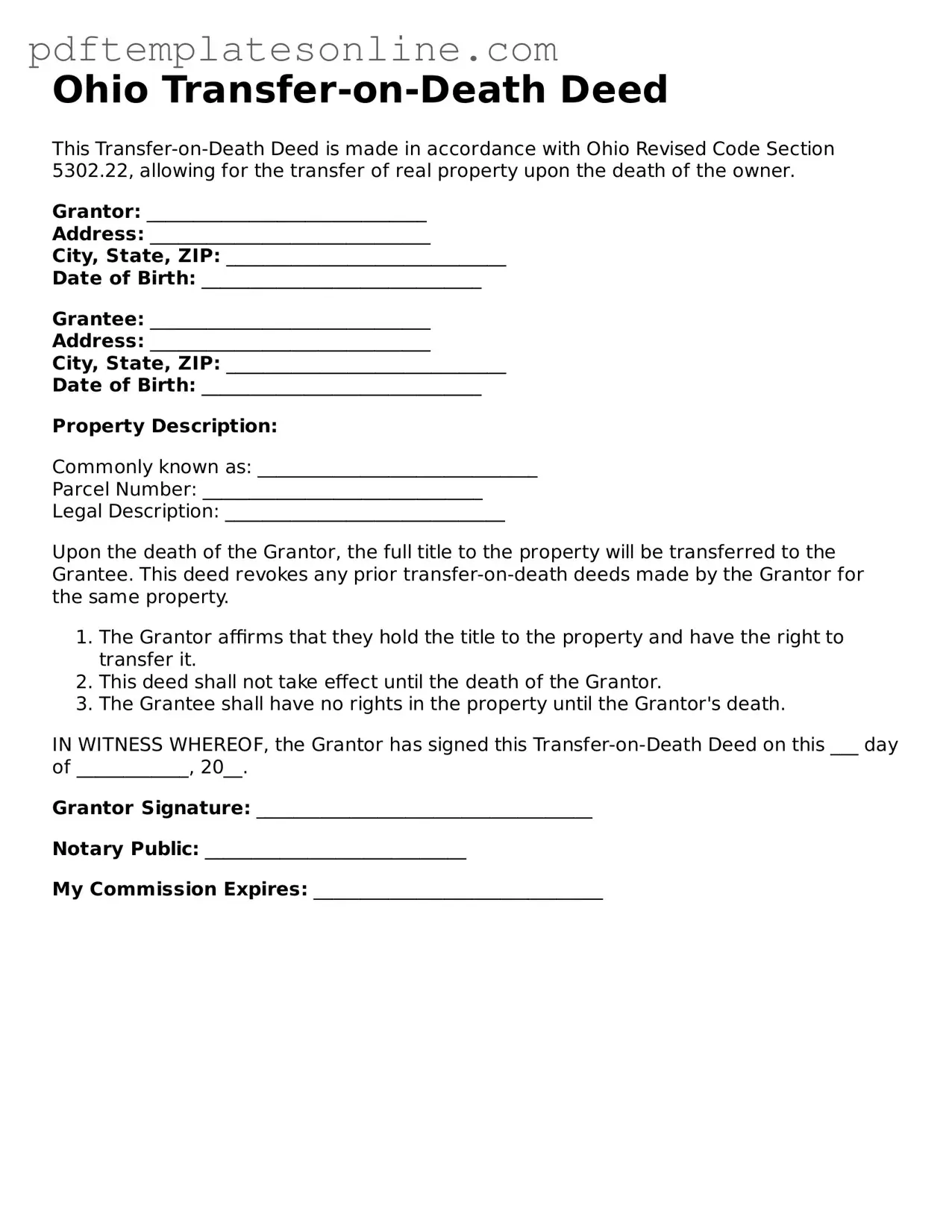Filling out the Ohio Transfer-on-Death Deed form can be straightforward, but several common mistakes can lead to complications. One frequent error is not providing complete property information. It’s essential to include the full legal description of the property, not just the address. Omitting details can create confusion and may invalidate the deed.
Another mistake is failing to sign the deed in front of a notary public. The law requires that the deed be notarized for it to be valid. Without this step, the document may not be recognized by the county recorder, which can hinder the transfer process.
People often forget to include the names of the beneficiaries clearly. It is crucial to list the full names of all beneficiaries. Using nicknames or initials can lead to disputes or challenges later on. Ensure that the names match the official identification documents of the beneficiaries.
Some individuals neglect to check the eligibility of the beneficiaries. Not all individuals can be named as beneficiaries under Ohio law. For instance, a minor cannot inherit property directly. It’s important to understand the rules regarding who can receive property through a Transfer-on-Death Deed.
Another common error involves not recording the deed promptly. After completing the form and having it notarized, it must be filed with the county recorder’s office. Delaying this step can create issues, especially if the property owner passes away before the deed is recorded.
People sometimes assume that a Transfer-on-Death Deed can be used for all types of property. However, certain types of property, such as joint tenancies or properties with existing liens, may not be eligible for this type of transfer. It’s important to verify the property type before proceeding.
Misunderstanding the implications of the deed can also lead to mistakes. A Transfer-on-Death Deed does not eliminate the need for estate planning. Individuals may mistakenly believe that this deed alone is sufficient for their estate planning needs. Comprehensive planning is still necessary to address other assets and debts.
Lastly, individuals may overlook the importance of keeping the deed in a safe place. After recording the deed, it should be stored securely, and beneficiaries should be informed of its existence. Failing to do so can result in confusion or disputes after the property owner’s death.
